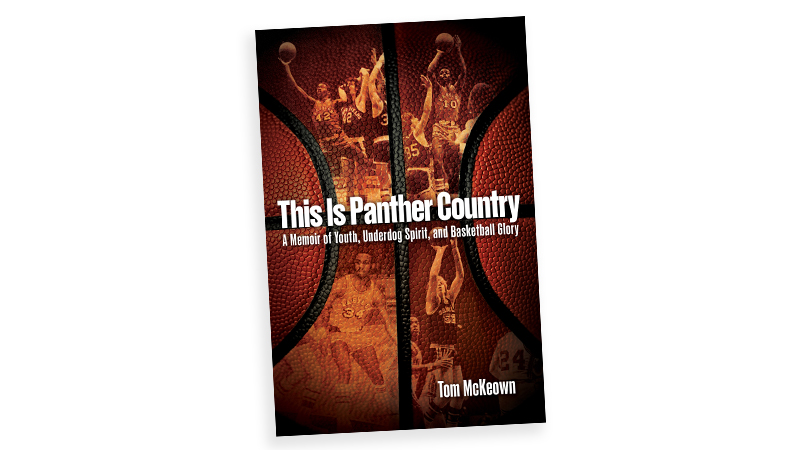Book Excerpt: The Mustang Turns 50
Ford’s pony car debuted at the April 1964 New York World’s Fair
MUSTANG: FIFTY YEARS Celebrating America’s Only True Pony Car
By Donald Farr, $50 retail/ $37.50 at publisher’s site, Motorbooks.com 256 pp., 400 images, pub. 2013 by Motorbooks, an imprint of Quayside Publishing Group
The Edsel nearly doomed the Mustang from the start
Just before the dawn of the 1960s, on Nov. 19, 1959, Ford announced it was discontinuing its Edsel line of automobiles after only three years of production … The company reportedly lost $350 million on the Edsel program. The name itself became synonymous for failure and remains even so today. It was a debacle and an embarrassment for Ford Motor Company — something not lost on Ford president Henry Ford II.
So when Ford Division president Lee Iacocca proposed a new sporty four-seat car in 1961, Henry, still smarting from the Edsel fiasco, walked out of the meeting. He was not interested.
So when Ford Division president Lee Iacocca proposed a new sporty four-seat car in 1961, Henry, still smarting from the Edsel fiasco, walked out of the meeting. He was not interested.
THE FAIRLANE COMMITTEE
Realizing that Henry Ford II was still reeling from the Edsel failure and would likely not be receptive to investing time and funds into a new car line, Iacocca put together a skunkworks group of executives to brainstorm how Ford should prepare for the predicted onslaught of younger buyers coming into the market over the next decade. The first meetings were held at the Fairlane Inn, providing the group with a name. …
The Fairlane Committee outlined the parameters for a new car, one that would appeal to a younger customer. Chase Morsey’s research confirmed that the 20-24-year-old age group would increase by more than 50 percent during the 1960s, and that 18-34-year-olds would account for at least half of the increase in car sales over the same period. The research also indicated a growth in two-car families and women buyers, who preferred small cars for their better handling. …
Iacocca and the Fairlane Committee realized that everything the emerging youth market wanted in a car was already available — the sporty four-seater appeal of the Thunderbird, the sports car look of the Ferrari, and the economy of the Volkswagen. Yet something told Iacocca that there might be a market for a car that combined all of those attributes in a compact yet sporty design.
***
SPORTY BY DESIGN
On Aug. 16, [1962,] six clay models … were assembled in the styling courtyard for review by Iacocca and other executives. For Iacocca, the clear winner was the Cougar from the Ford studio. …
“When it was about half done, Joe [Oros] invited me down to have a look,” Iacocca recalls. “As soon as I saw it, one thing hit me instantly: although it was just sitting there on the studio floor, the brown clay model looked like it was moving.” …
With the design selected, there was still the matter of getting Henry Ford II’s approval. Subsequent to the Aug. 16 viewing, Iacocca brought HFII to the styling courtyard to see the Cougar clay model. …
Still lacking a commitment Iacocca visited Henry Ford II at his 12th-floor office in Ford World Headquarters for a private meeting. Obviously tiring of Iacocca’s relentless pursuit of his new sporty car, HF II reportedly said, “I’ll approve the damn thing. But once I approve it, you’ve got to sell it, and it’s your ass if you don’t.” …
With Henry Ford II’s signoff, Iacocca had corporate approval and $45 million — not the $75 million he had requested — to develop and tool-up for a new Ford vehicle. He was also looking at less than 18 months to complete it, compared to the typical three years required to build a new car. …
***
By] late 1963, pilot cars were being assembled, and assembly plant supervisors began training to learn how to incorporate Mustang builds on the assembly line.
At the same time, marketing research revealed that Iacocca’s hunch about the youth market was not only on target, but that he may have even underestimated its impact. The original estimate of 85,000 units for the first year was increased to more than 200,000, more than the Dearborn assembly plant could handle. Iacocca gambled by preparing to convert a second assembly plant for his new car’s production.
COUGAR, TORINO OR MUSTANG?
As the styling and engineering departments ironed out the complicated details to roll completed cars off the assembly lines, there was much debate over the all-important process of naming the new car. “The name is often the toughest part of the car to get right,” Iacocca said. “It’s easier to design doors and roofs.”
After approval, the new car took on the Cougar name of the Dave Ash and Joe Oros winning design. At a May product strategy meeting, Cougar was among the four names chosen, along with Monte Carlo, Monaco, and Torino. It was quickly determined that the first two had already been registered by other auto manufacturers. …
Torino, the Italian spelling for the city of Turin, was initially selected because it made a connection to European sports cars. However, Charlie Moore in public relations soon pointed out that Henry Ford II was having an affair with a jet-setting Italian divorcée. Coming out with a new car with an Italian name could lead to negative publicity.
That left Cougar, the name preferred by design winners Ash and Oros. They even sent Iacocca a die-cast Cougar emblem with a note: “Don’t name it anything but Cougar.” Iacocca wasn’t convinced. …
Around the same time, a two-seater styling concept, created to test the waters for a possible Ford sports car, was making the show car rounds. It debuted as the Ford Mustang Experimental Sports Car on Oct. 7, 1962, at the U.S. Grand Prix race at Watkins Glen, N.Y., with designer John Najjar taking credit for the name, admitting that he borrowed it from the P-51 World War II fighter plane. However, when the aviation connection was rejected, he grabbed a dictionary and learned that the Mustang horse was defined as a “hardy, wild horse of the American plains.” At that point, the Mustang concept car took on an equestrian identity. Designer Phil Clark was asked to pen a running horse logo. Later, a red, white and blue tri-bar was added behind the horse to confirm the all-American heritage. …
Ford’s J. Walter Thompson ad agency preferred Mustang because “it had the excitement of the wide-open spaces and was American as all hell.” It also scored at the top of marketing surveys.
In a fall 1963 column for The Des Moines Register newspaper, sports writer Maury White recalled Iacocca visiting the Southern Methodist University football team’s locker room after the SMU Mus- tangs had played an inspired, albeit losing, effort against the Michigan Wolverines in the fall of 1963. Iacocca had attended the game in Ann Arbor, Mich., and afterwards asked to speak to the SMU players. White recounted Iacocca’s speech in the locker room: “Gentlemen, Ford is coming out with a new sports car and we have been considering names. It will be light, like your team. It will be quick, like your team. It will be sporty, like your team. Today, watching Southern Methodist’s Mustangs play with such flair, we reached a decision. We will call our new car the Mustang.”
Likely, the decision had already been reached and Iacocca used the occasion as opportunistic publicity. Regardless, his description of light, quick and sporty was right on target.
WHEN STARS ALIGN
On Jan. 1, 1964, Americans shook off their hangovers and woke up to a New Year filled with uncertainty. Less than two months earlier, on Nov 22, 1963, President John F. Kennedy had been assassinated in Dallas. …
On Feb. 9, American youth began to pull out of the doldrums when the Beatles appeared on The Ed Sullivan Show. Forced to suffer through manufactured teen music after Elvis’ induction into military service in 1958, the youth market quickly embraced the four lads from England. When Billboard magazine issued its Top 100 records on April 4, singles from the Beatles took the top five spots. The youth movement had begun.
There was more good news on the business front. Auto sales were on target for an all-time high during the first quarter of 1964. Disposable household income was also up, and Congress had just approved an income tax cut. It was the perfect storm for a new kind of youthful car from Ford.
At the Dearborn assembly plant, workers returned on Monday, Feb. 10 — right after watching the Beatles’ Ed Sullivan debut on Sunday night — to begin building the first preproduction Mustangs.
Ford was ready with its marketing campaign for the new Mustang, which would go down as one of the most expensive launches in American auto history. The PR machine cranked up in late 1963 when Ford invited a number of national magazine writers to Dearborn to make them aware of the emerging youth market.
Several weeks before the April 17, 1964, introduction date, 200 of the nation’s top radio disc jockeys visited Dearborn to drive Mustangs, and college newspaper editors were also invited behind the wheel. …
On Thursday night, April 16, Ford purchased simultaneous commercial slots for all prime-time TV programming between 9:30 and 10 p.m. Viewers who tuned in to watch popular shows Hazel, Perry Mason and The Jimmy Dean Show could not miss the Mustang promotions. On introduction day, April 17, 2,600 major newspapers carried full-page Mustang advertisements; 24 national magazines were on the newsstands with full-page or double-truck ads featuring what Iacocca called the Mona Lisa look — a profile of a white hardtop along with the Mustang’s “$2,368 F.O.B.” price and the simple statement, “The Unexpected.” …
Walter Murphy in public relations scored the biggest coup of the campaign when both Time and Newsweek magazines featured Iacocca and the Mustang on their covers, a first for an auto executive. “This was outstanding publicity for a new commercial product,” Iacocca said. “Both magazines sensed we had a winner, and their added publicity during the very week of the Mustang’s introduction helped make their prediction a self-fulfilling prophecy. I’m convinced that Time and Newsweek alone led to the sale of an extra 100,000 cars.”
In addition to the TV, newspaper and magazine coverage, Mustangs were displayed in 200 Holiday Inn lobbies and in 15 of the country’s busiest airports. Millions of pieces of direct mail were sent to owners of compact cars. It was the largest and most comprehensive vehicle launch in American automotive history. But would it work?
MUSTANG MANIA
Ford dealers around the United States and Canada weren’t prepared for the onslaught. After slyly off-loading new Mustangs and hiding them in shops or outbuildings, dealerships opened their doors on Friday morning, April 17, and were overwhelmed by just how many car-crazed drivers wanted their first glimpse at Ford’s new Mustang. The stories have become Mustang lore:
• In Texas, a dealer reported that 15 people were bidding on his last Mustang.
• In Pittsburgh, a dealer was unable to bring a Mustang down off the wash rack because so many people were crowded underneath.
• In Chicago, a dealer locked his doors for fear that the mobs endangered themselves and his employees.
• One buyer slept in his car at the dealership until his check cleared the next day.
• In Seattle, a concrete truck driver was so mesmerized by the Mustangs on display that he crashed into the dealership’s showroom window.
The hysteria continued over the weekend as Ford dominated TV airwaves with Mustang commercials on Saturday and Sunday nights. According to Iacocca, more than four million people visited Ford showrooms over the April 17-19 weekend. Most dealerships sold out of their allotted Mustangs; salesmen wrote orders for 22,000 cars, creating a two-month backlog.
Although Ford had directed dealers to keep at least one Mustang in their showroom until the end of April, most could not turn down the sales opportunities. A few jumped the gun and sold Mustangs before the official introduction. In Chicago, 22-year-old Gail Brown celebrated her first job by visiting Johnson Ford on April 15. She was looking for a convertible; the salesman told her, “Come back here, I have something you might like.” In the garage area, under wraps, was a light blue Mustang convertible. Gail bought it on the spot and picked it up the next morning. For one day, Gail was driving the only Mustang on the road in the Chicago area. “I felt like a movie star,” she said.
Within weeks of the April 17 introduction date, it was obvious that Ford had a runaway sales success on its hands. With that came the challenge of keeping up with demand. A third assembly plant, in Metuchen, N.J., was quickly overhauled to build Mustangs. …
By the end of the extended 17-month 1965 model year, Ford had sold 680,989 Mustangs.
Donald Farr has been with Mustang Monthly magazine as a journalist and editor for 30 years. He has also written Mustang Boss 302: From Racing Legend to Modern Muscle Car and owns the 1966 Mustang GT hardtop that his grandfather bought new. For more, visit DonaldFarr.net.
As an Amazon Associate, Boomer Magazine earns from qualifying purchases from linked book titles.


